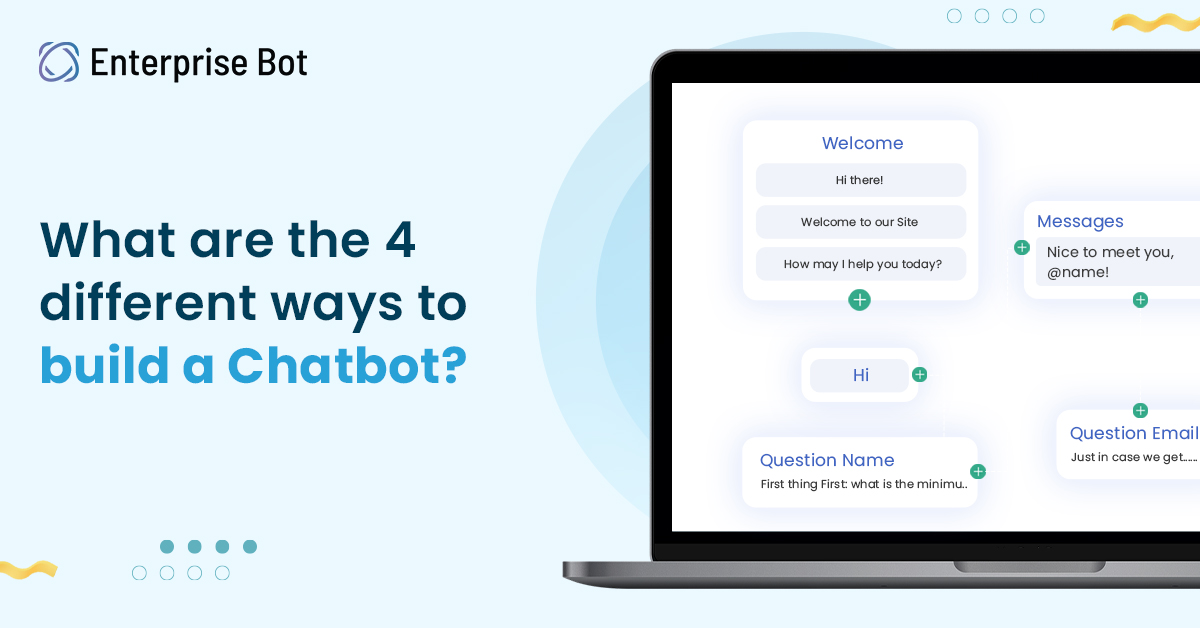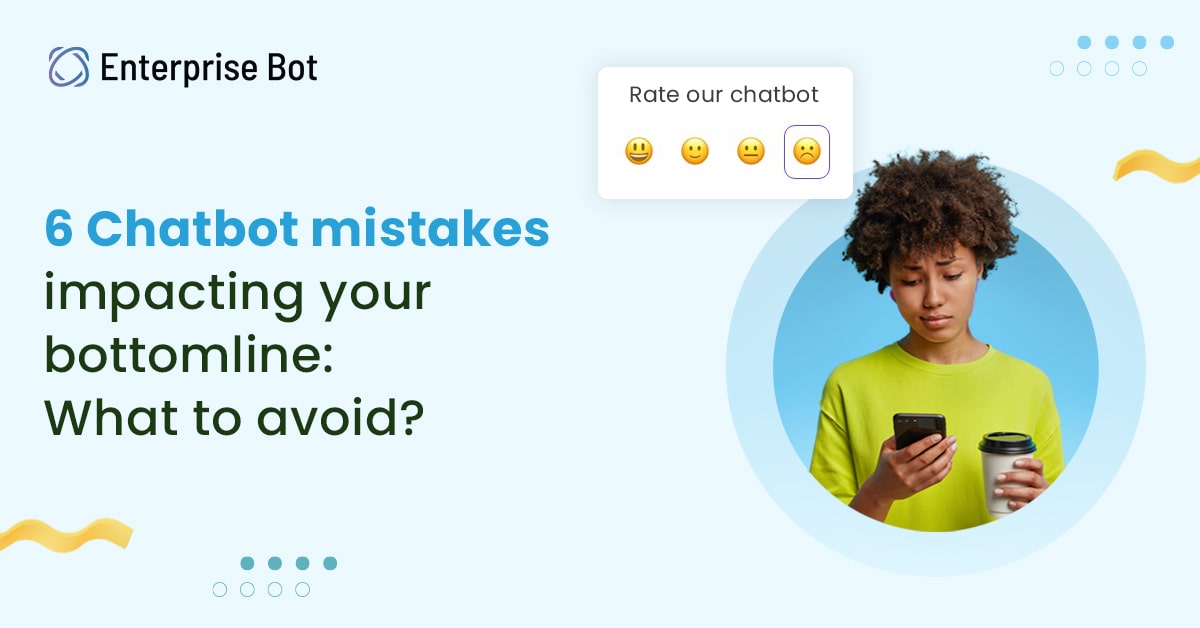10 best practices to build chatbots with superior UX design

At Enterprise Bot, we experiment with novel Conversational AI technologies to transform the way businesses across the globe interact with their customers. One of the exciting solutions we design and engineer are chatbots that are capable of intuitive human-like interactions.
We have created several cutting-edge AI chatbots capable of pre-built integrations, contextual understanding, and smart escalation to live agents based on sentiment analysis. And one thing that has stood out to us across our span of experience is the importance of a good UX design for the bots.
We believe that a superior UX design not only helps reflect your brand identity but also craft exceptional user experiences.
Here are a few of the best practices we personally follow with a professional rigour 🙂 to build chatbots with superior UX design for our clients and, we believe, could similarly help you create more fulfilling user journeys!
1. Aim for an end-to-end user experience
To build chatbots with superior UX design Train the bot such that it is able to answer maximum user queries within the conversational interface of the chat window itself instead of redirecting the user to an external webpage or website. Most redirects can be irrelevant and disrupt the smooth flow of the conversation. They can confuse the user and often veer them off the path to the right answer. Enabling quick resolution of queries within the interface itself saves the users this inconvenience and ensures user happiness.
2. Provide smart suggestions with the help of buttons or quick replies

It is extremely helpful to provide suggestions that help the user choose responses. Add the most common responses as context-independent smart buttons or context-dependent quick replies so the user won’t have to sit through a whole conversation to get the answer they’re looking for but instead, can navigate there with a few, quick clicks.
3. Predict and pre-empt user behaviour

If you have historical data, you can deduct conversational patterns from it. Use those learnings to create conversational stories/flows that lead your customers to their correct answer faster and help build chatbots with superior UX design. .
4. Cross-reference similar topics

If you have two topics that include similar questions and your customers risk navigating to the answer to the wrong question, suggest the other problem in suggestions of the current response. In the early phase, when the bot is still learning, this is a handy way to keep the confusion at bay and ensure customer satisfaction and build chatbots with superior UX design.
5. A chatbot isn’t all about chat

To build chatbots with superior UX design, add smart elements such as calendars, maps, forms, etc. to offer your customers an easy way to get their answers or communicate their needs across to the chatbot. Adding these elements go a long way in improving usage and providing a smooth journey to the user.
6. Short and concise is key
Keep your answers short and concise so as not to overcrowd the screen, especially on smartphones. This can be done by formatting the text to make it easier to read (line breaks, bold fonts, bullet lists, etc.). Avoid very long blocks of non-formatted text that reduce readability and make the whole user experience very inconvenient.
7. Your brand matters
Adjust the language and general behaviour of the bot to match your company’s brand guidelines and public image and build chatbots with superior UX design. . For instance, if you’re a formal institution, refrain from training your bot in colloquial behaviour, or your customers might get irritated. Also, try to use language that everyone finds easy to understand. Avoid technical terminology as much as possible.
8. It’s essential to be specific but sometimes not too specific
Train the bot so that it is able to appropriately answer multiple possible question types for the same use case. For instance, the bot should not start the reply with “Yes, …” if the user has not asked a Yes/No question.
9. Being polite is important
To build chatbots with superior UX design, make sure the bot is polite at all times and offers a solution if the user is unhappy. For instance, the bot can reply with, “I’m sorry you feel that way. Would you like to speak to an agent?’’ before redirecting the chat to a support agent with the conversation history, in case the user is not satisfied with the bot’s response.
10. Tread the fine line between playful and useful carefully
Make sure your bot does not have too many playful questions and responses. We have seen that this significantly reduces the usefulness of the bot. For instance, you may get a lot of banter about dates. It’s essential to cover these topics, but in answer to these questions, smartly guide the user back to the main issues.


